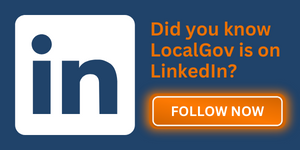
Tanya Braun, Living Streets makes the case for low-traffic neighbourhoods (LTNs) and argues for an area-by-area approach to reducing the impact of traffic.
Low-traffic neighbourhoods (LTNs) is a term that’s attracted a lot of attention in recent years, despite not being a new concept.
Supporters argue that they reduce air pollution, increase road safety and improve conditions for walking, wheeling and cycling. On the other side, some argue LTNs increase traffic on main roads and negatively impact those who rely on their vehicle.
It has resulted in many local authorities avoiding the term ‘LTN’ altogether, so you might have heard them referred to as ‘people-friendly streets’ or ‘active travel neighbourhoods’.
What is an LTN and what benefits do they bring?
LTNs are groups of residential streets, bordered by main or distributor roads, where through traffic is discouraged or removed using modal filters, such as bollards or planters.
The principle at the heart of the LTN concept is a fundamentally sound one. With the biggest barriers to walking often being the speed and volume of vehicular traffic, LTNs aim to reduce traffic on residential streets by making it more difficult for through traffic to use them. With emissions from motor vehicles being the largest source of domestic greenhouse gas emissions and air pollution, costing the UK up to £19bn a year and causing more than 29,000 early deaths, reductions in car usage can make significant improvements to our local environment. And less traffic means less congestion – which benefits everyone.
With through traffic gone, the streets in an LTN should see dramatic reductions in levels of motor traffic and often speeds. And it’s not just passing traffic that tends to go down. While residents in an LTN can still do all their journeys by car if they want or need to, some trips will be a bit longer. This, combined with far quieter, safer-feeling streets, enables residents to switch to healthier ways of getting around, so there are benefits abound to individuals’ physical health.
Why some areas might need an LTN
While some car journeys may be essential, it is also true that if car use is too convenient more people will drive journeys that could be walked or cycled. Added to that, smart technologies such as Google Maps or services like Uber route cars off main roads and onto residential streets to shave seconds off a journey. Now many previously quiet roads have become busy and hostile for the people who live on them.
Motor traffic cutting through side streets has a serious impact on the health and quality of life of people living there – too much traffic, too fast, too noisy, too much pollution.
Issues of air and noise pollution are very real. But the biggest negative of through traffic is the strangling effect it has on people spending time on their streets. In the space of two generations, we’ve seen children’s roaming distance collapse as motor vehicle volumes on residential streets have rocketed. In England in 1971, 55% of children under 10 were allowed to travel alone to places other than school within walking distance; by 2010, almost no children under 10 were allowed to do so. We’ve known for decades that the lower the traffic on a street, the more community interaction and physical activity we see. Because of that more and more councils and residents are now working together to make residential streets work better for the people who live on them.
Places where through motor vehicle traffic has been removed or reduced – so only residents and a few deliveries and services have access – are great for everyone. These are networks of quieter streets where children play out, neighbours catch up, air pollution is lower, and walking and cycling are the natural choice for everyday journeys. And it turns out that cutting through traffic on side streets doesn’t add significantly to congestion on main roads.
Getting it right
LTNs will not always be suitable for all locations and criticism of some has been justifiable. We need to look carefully at areas where LTNs have attracted controversy to understand what went wrong and ensure LTNs are something that are done with communities rather than to communities.
There is no substitute for strong consultation and data collection. Residents should be fully involved in the development of schemes, so they reflect their needs. Whilst web-based surveys are useful, they exclude large parts of the population and are no substitute for door-to-door engagement and public events which can pick up the views of whole communities.
We need to take an area-by-area approach to reduce the impact of motor traffic overall. Whether that is LTNs, actions to support better public transport, measures to improve infrastructure on main roads or a combination of measures. Doing nothing is not the solution if we want to reduce harmful emissions, tackle air pollution and improve our health.













